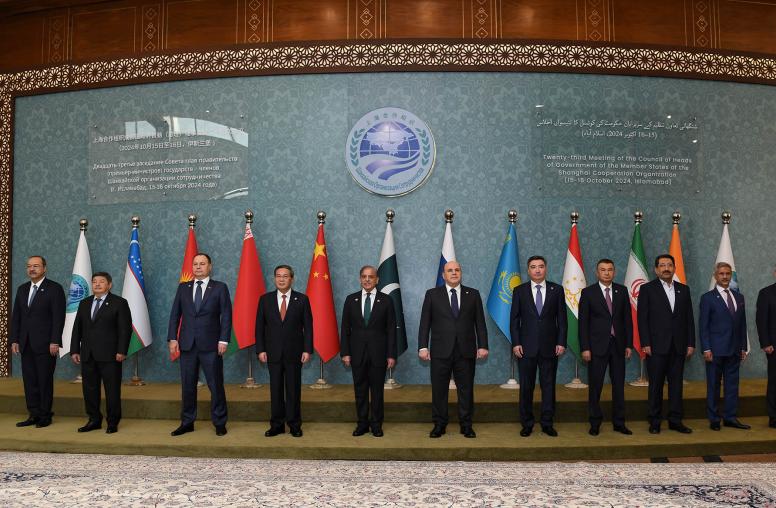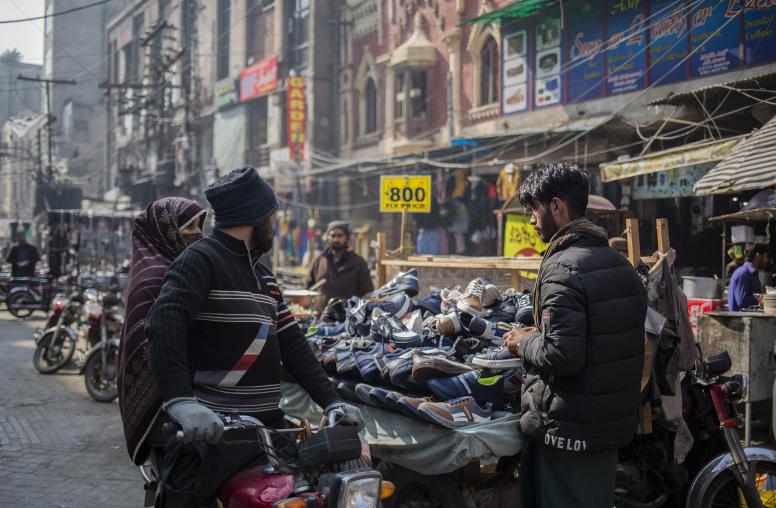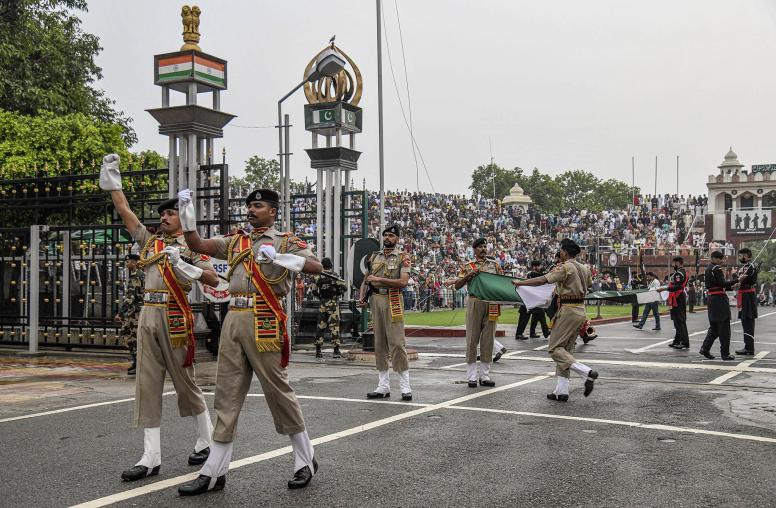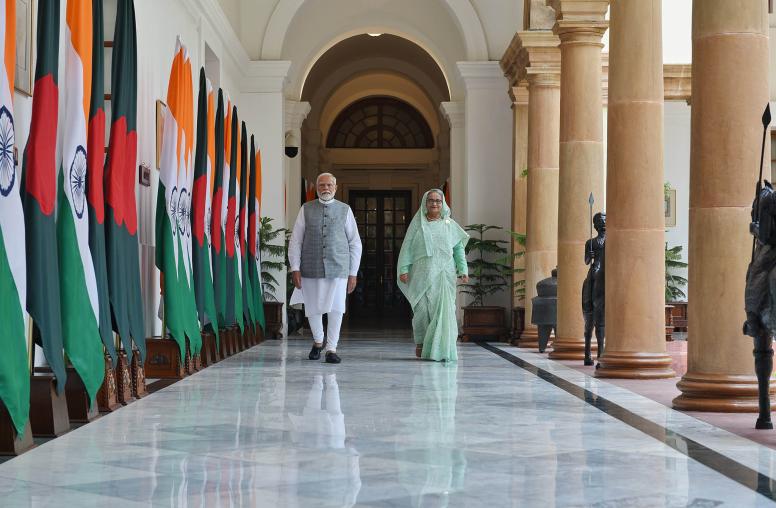Is the United States Ready for the Next India-Pakistan Crisis?
January Clash over Attack by Pakistani Militants Revives the Question
When terrorists attacked India’s Pathankot air base near the Pakistani border in January, and India said the assailants had come from Pakistan, observers worldwide momentarily held their breaths, wondering whether this confrontation would spin into wider violence.

This time it didn’t, but the Pathankot attack was a reminder that the United States—which historically has played moderator in Indo-Pakistani confrontations—must be ready to reprise that role pretty much any time. And the conditions for doing it successfully are changing, South Asia specialists said March 14 at USIP. China is playing a greater role in the region, the United States is continuing to tilt toward India, and technologies—from broadband communications to armed drone aircraft—could accelerate and escalate future crises.
“When a new generation of U.S. policymakers comes in, particularly with the next administration … they need to review this history because their counterparts on the opposite side will know this history.” –Daniel Markey, Johns Hopkins School of Advanced International Studies
India and Pakistan fought their first war over the territory of Kashmir as the two countries were being partitioned at their independence from British rule in 1947. New wars erupted in 1965, 1971 and 1999. Terrorist attacks by Pakistan-based militant groups with reported ties to Pakistan’s military intelligence community have stalled peacemaking efforts by the two governments, such as the 2008 assault by Lashkar-e-Taiba militants on the Indian city of Mumbai.
The United States often has leapt in to mediate in these wars and near-wars. And the stakes for that role spiked after 1998, when India and Pakistan brandished their nuclear weapons abilities at each other in a series of dueling underground bomb tests. While interventions by U.S. diplomats and presidents may have contained or ended crises, the United States has little scope for advancing an overall solution to the India-Pakistan conflict because neither side is prepared to implement one, the specialists said in a USIP panel discussion.
A Kashmir Solution: Visible but not Accessible
The shape of an eventual resolution for the conflict is broadly understood among moderates on both sides, said Daniel Markey, a South Asia scholar at the Johns Hopkins University’s School of Advanced International Studies in Washington.
“So the solution’s not the question, but preparing the publics and … the political space for that solution to actually take place on the ground, that’s the challenge,” he said. “And that’s not an American challenge, that’s an Indian challenge and a Pakistani challenge. There’s not much we can do about it.”
Pakistan’s former military ruler and president, General Pervez Musharraf, offered the best opportunity for a broad resolution on Kashmir when he “was still in power and … fully in command of the military and the ISI (Inter-Services Intelligence Directorate),” said Ted Wittenstein, who served in the State Department during the 2008 Mumbai crisis and now heads a program on American diplomacy at Yale University. In 2007, Musharraf “had moved to a point where the India-Pakistan crisis was as close to being resolved on Kashmir as it’s ever been,” he said. Musharraf has urged publicly that the current military “line of control” in Kashmir be turned into a “soft border”—one open to transit by Kashmiris—with a form of self-governance to be negotiated for the territory.
Preparing for the Next Crisis
Speakers at the event discussed ways to sustain or improve the United States’ readiness to help contain a future crisis in India-Pakistan relations. Their points included these:
- The arrival in 10 months of a new U.S. administration could pose a challenge. “When a new generation of U.S. policymakers comes in, particularly with the next administration, … they need to review this history [of India-Pakistan crises and the US role] because their counterparts on the opposite side will know this history, perhaps will have lived this history themselves,” said Markey.
- While U.S. officials should be grounded in that history, they also need to plan for “a different kind of crisis,” said Polly Nayak, a former U.S. government intelligence specialist on South Asia. U.S. contingency planning should “assume that whatever happened in the past is not going to happen in the future.” India and Pakistan confront each other over numerous issues: their roles in Afghanistan, the sharing of Indus River waters, and border disputes. The next crisis could be started, Nayak said, by “some other form of provocation” besides a terrorist attack.
- The United States should expect China also to play a role in future India-Pakistan crises, said Nayak. China did so in the India-Pakistan confrontation of 2001-02, she said, when the two rivals came close to war after Pakistan-based militants attacked India’s parliament and other Indian targets. Given China’s concerns about Islamist militant movements in its western regions, notably Xinjiang, “the Chinese have in private been quite firm” in pressing Pakistan to shut down militant groups operating from its territory, she said. On that point, “there hasn’t been a whole lot of daylight between the U.S. … and China.”
- To better manage future India-Pakistan crises, the United States should consider forming a “standing…organization” with India, China and perhaps Pakistan, said Markey. And the U.S. postures toward South Asia and China should be more fully integrated.
- Planning efforts also should count on future crises evolving swiftly, in part because of technology advances available to both sides, said Nayak, who co-authored studies on U.S. crisis management in the 2001-2002 and 2008 confrontations. For the management of future crises, “the window will be much smaller, whether we’re talking [about] drones or other military [technology] advances,” she said.
- As a baseline policy, the United States should continue to “pursue strong relationships … independently” with both India and Pakistan, “and not be held hostage” to their conflict by trying to achieve a perfectly balanced “strict neutrality” between them, said Markey. While the United States has continued a long, slow tilt toward India as a partner in South Asia, it should work to “retain some ability or leverage with both sides.”



